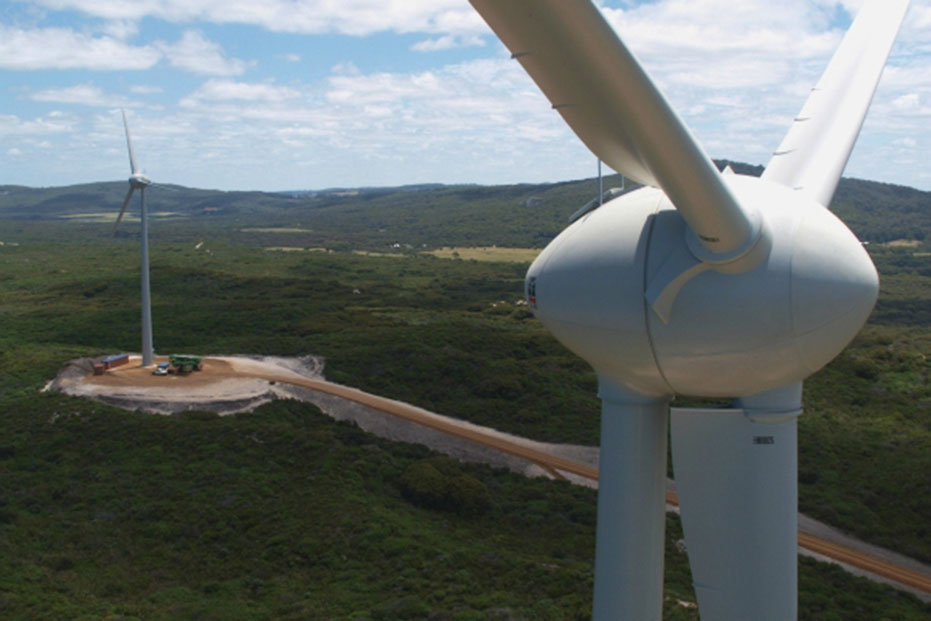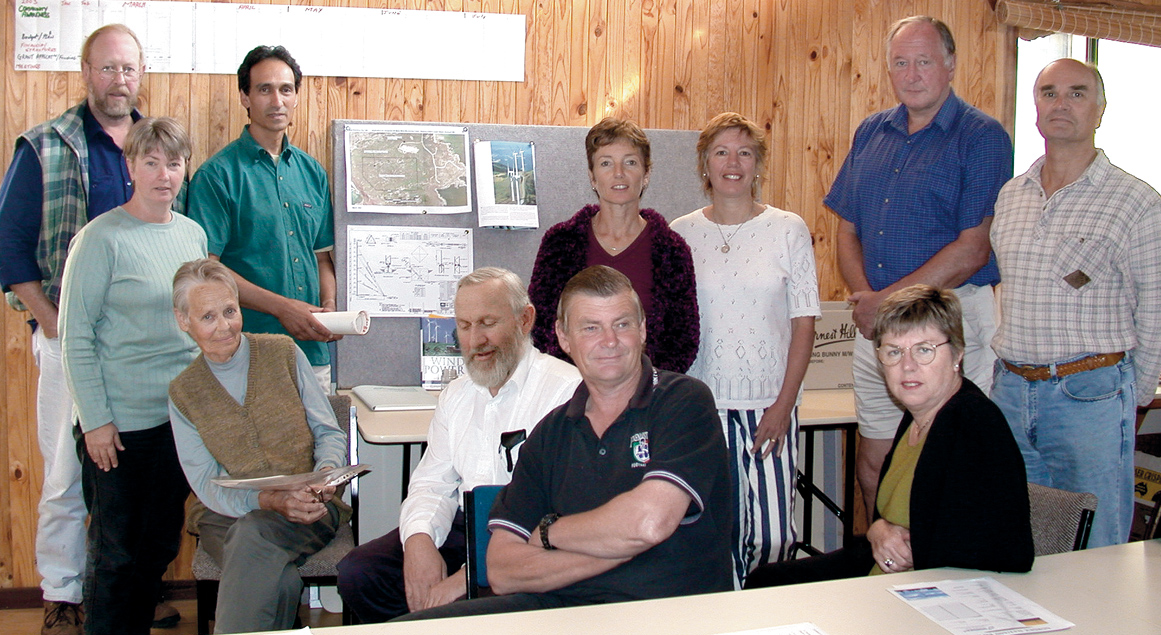

The project
Denmark homes and businesses currently consume in the order of 14 gigawatt hours (GWhr) of electricity annually. The windfarm supplies about 50% of this demand, and prevents about 6000 tonnes of greenhouse gases (GHGs) entering the atmosphere each year – equivalent to taking about 1500 cars permanently off the road.
Following a series of public workshops in 2003 Denmark’s community windfarm project began as a local response to the global challenge of climate change.
The vision was to build a small, community-scaled windfarm feeding into the regional grid. As well as improving the quality and reliability of the district’s power, a windfarm would reduce the community’s reliance on fossil fuels, secure its energy future, and deliver tangible social and environmental benefits.
At the time it was the first such project in Australia. Along the way numerous lessons were learned, old boundaries broken and some shibboleths overturned ‒ all thanks to a collective vision being obstinately pursued.
The original steering group, March 2003. Standing: Craig Chappelle, Jeanette Grant, Paul Llewellyn, Chris Bailey, Sally Haigh, John Corson, Gary Schwab. Seated: Margaret Leslie, Alex Syme, George Ebbett, Colleen Donnelly. The group comprised representatives from DCW Inc, the Denmark Shire Council, and the Denmark Environment Centre.
A not-for-profit steering group, Denmark Community Windfarm Inc, was formed to turn the vision into a reality. Extensive surveying of potential sites indicated that a Crown reserve at Wilson Head, 10km south of the Denmark townsite and facing the Southern Ocean, had the best wind energy and met criteria relating to environmental impact, noise, distance from residences, proximity to existing infrastructure, land tenure, amenity and other constraints.
A feasibility study showed that the project was technically and financially feasible, and in August 2006 an application was made to the federal government for funding under its Remote & Regional Power Generation Program (RRPGP) to provide 50% of capital costs, with the balance to be found by private investors and/or loans.
To take the project through to construction and operation a public company, Denmark Community Windfarm Ltd, was registered on 15 April 2011, and an offer document published. The 1.8 million shares issued by the company were taken up in less than a month.
Local businesses were employed in all phases of the project, from planning to surveying, roadworks, internal electrical works, switchroom construction, executive management and financial oversight, making this a true community effort.
In addition to the project’s local success it helped to put community-based energy production on the national agenda, and provides a model on which other rural and remote communities throughout Australia can create their own projects. See Community Energy.



